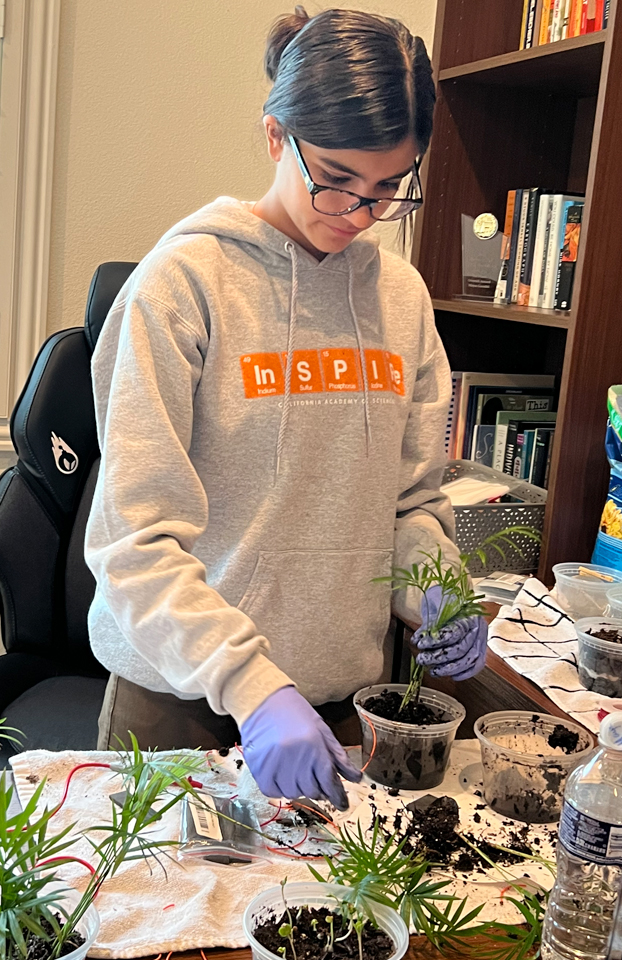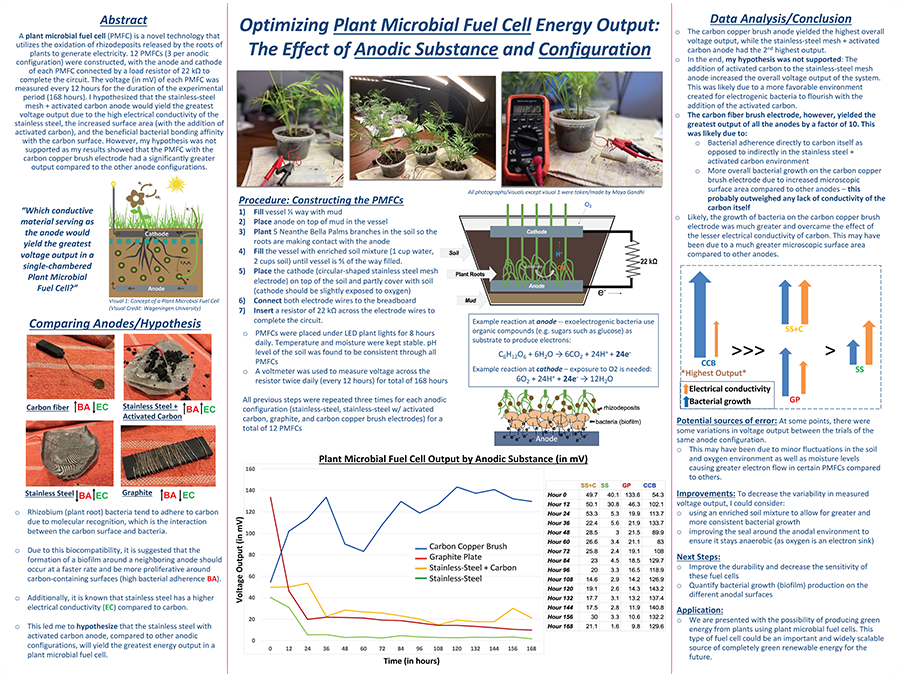Maya Gandhi
Anaheim, CA
Maya explored different substances to boost energy output of plant microbial fuel cells, which generate electricity using living plants and microbes
Optimizing Plant Microbial Fuel Cell Energy Output: The Effect of Anodic Substance and Configuration
View PosterProject Background
Maya is interested in eco-friendly sources of energy production. “It is concerning that fossil fuels still account for the majority of our world’s energy while being responsible for over 90% of the harmful carbon emissions in our atmosphere,” she says. While researching alternative energy sources, she came across a study exploring plant microbial fuel cells. This technology generates electricity using living plants and bacteria residing in the soil. She decided to explore different substances to use for the fuel cell’s anode, the electrode where electricity flows from, to boost energy output.
Tactics and Results
Maya constructed several plant microbial fuel cells in small plastic containers. First, she put a layer of mud with the bacterium rhizobium. These microbes break down plant waste, and the energy from the chemical reaction gets converted into electrical energy by the fuel cell. Next came the anode layer. Maya tested four options: stainless steel mesh, stainless steel with activated carbon, graphite and carbon copper brush. She made three fuel cells per anode type. After that was the plant roots and surrounding soil, and then a stainless steel mesh cathode. This is the electrode where electricity moves into. She wired up each fuel cell’s cathode to its anode to complete the circuit. Maya ran the experiment for one week and every 12 hours she measured each fuel cell’s voltage output. In the end, the fuel cells with a carbon copper brush anode consistently produced the most electricity. “Given the vast amount of vegetation throughout the world,” Maya says, “plant microbial fuel cell technology has the potential to be an important clean energy source.”

Beyond the Project
Increasing the durability of the fuel cells could help minimize variations in energy production, Maya says. She also wants to see if there’s a relationship between bacterial growth on the anode and a fuel cell’s electrical output.
Other interests
“I find great joy in extracurriculars that allow me to enhance and utilize my leadership skills while using my resources to assist those in need,” Maya says. She has led several fundraisers as the president of her school’s National Junior Honors Society. Maya also enjoys her athletic activities, including basketball, Bollywood and hip-hop, where she can collaborate as part of a team. Because of her interest in green energy innovations, Maya hopes to become an environmental engineer.


